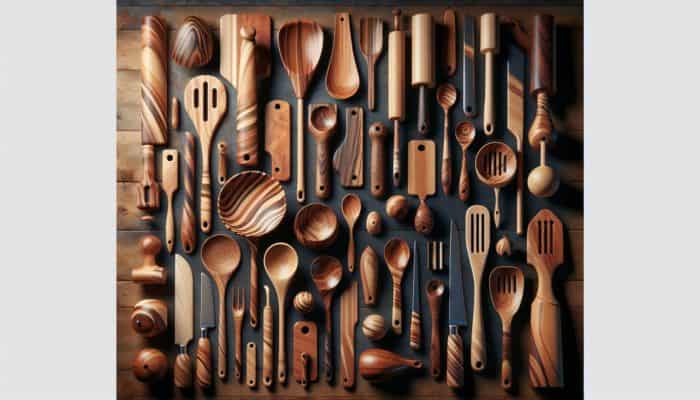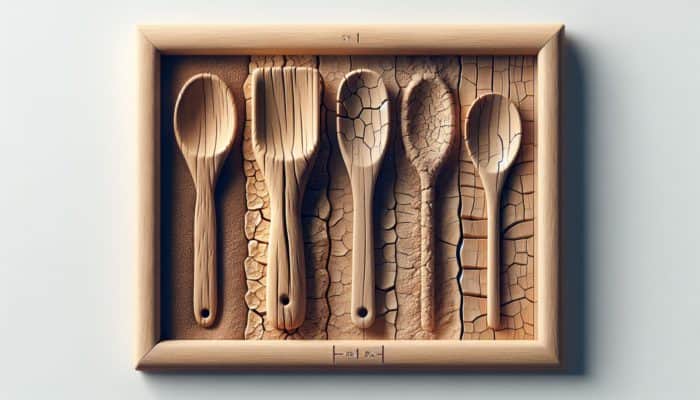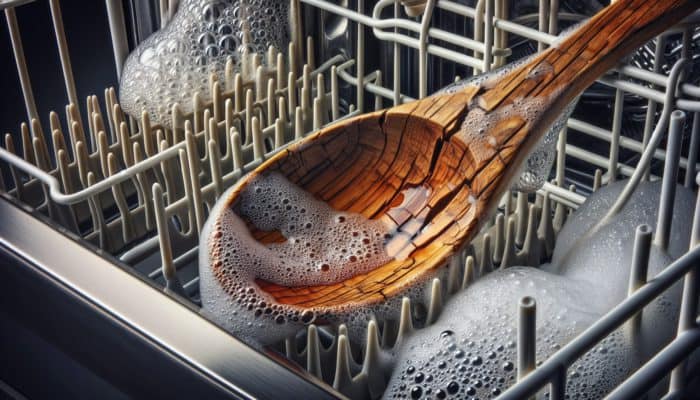Selecting the Best Wood for Creating High-Quality Kitchen Utensils
Exploring Diverse Wood Varieties for Kitchen Utensil Crafting

When selecting the most suitable woods for crafting kitchen utensils, it is essential to understand that not all wood types offer the same benefits. The choice of the right wood species is crucial for achieving optimal strength and functionality. Hardwoods like maple, beech, and walnut are top contenders due to their dense structure, which provides excellent moisture resistance. These hardwoods thrive in kitchen environments that demand durability because they can withstand heat, moisture, and regular contact with food without warping or degrading. This makes them reliable options for serious culinary enthusiasts who value quality in their cooking tools.
Among the various options, maple stands out for its fine, tightly packed grain that effectively resists bacterial growth, ensuring both hygiene and aesthetic appeal over time. Beech is recognized for its remarkable strength and durability, making it a preferred choice in both domestic and professional kitchens. Meanwhile, walnut, with its rich, dark tone and striking grain patterns, not only enhances the visual charm of any kitchen but also delivers consistent performance. When selecting wooden utensils, it’s vital to reflect on your cooking habits and choose wood types that align with your culinary needs, ensuring both functionality and lasting quality.
Understanding the Impact of Grain Orientation on Utensil Durability
The orientation of wood grain is a critical factor that influences the performance and longevity of wooden kitchen utensils. Wood grain can be oriented in various directions—vertically, horizontally, or diagonally—and each orientation can significantly affect the utensil’s strength and durability. For example, utensils crafted with a straight, vertical grain are typically less susceptible to splitting or cracking than those with irregular grain patterns. Grasping the significance of grain direction is essential when choosing utensils that can endure the daily demands of cooking while retaining their structural integrity over time.
Furthermore, utensils designed with careful consideration of grain direction tend to offer improved functionality. The grain orientation affects the utensil’s interaction with food, influencing everything from ease of use to resistance against staining. Utensils featuring vertical grain provide superior strength during mixing or stirring, while those crafted from cross-grain wood may be more prone to wear and tear. Always consider grain orientation when investing in wooden utensils to ensure you select products that will withstand the test of time in your culinary endeavors.
Recognizing the Incompatibility of Softwoods for Kitchen Utensils
While softwoods like pine may seem more budget-friendly and easily accessible, they are generally unsuitable for making kitchen utensils. Softwoods are typically more porous, making them prone to absorbing flavors, odors, and moisture; this can detrimentally affect the taste of your meals. These characteristics render softwoods less durable in kitchens where cleanliness and hygiene are of utmost importance.
Additionally, softwoods have lower resistance to wear, leading to quicker degradation over time. Utensils made from softwoods can splinter or warp, presenting both safety and practicality concerns. In contrast, hardwoods maintain their structural integrity longer, ensuring that your utensils remain safe and effective for food preparation. Opting for hardwood utensils not only elevates your cooking experience but also fosters a cleaner kitchen environment.
The Importance of Moisture Content in Wooden Kitchen Utensils

The moisture content of wood is a vital consideration when selecting wooden kitchen utensils. Wood that is overly saturated can warp, crack, or even develop mold, while excessively dry wood may become brittle and prone to breaking. Ideally, wooden utensils should maintain a moisture content between 6% and 8%, striking the perfect balance between flexibility and sturdiness. When purchasing wooden utensils, it is beneficial to assess their quality and the treatment they underwent before entering your kitchen.
To help maintain the ideal moisture level, it’s advisable to store wooden utensils in a climate-controlled environment, shielded from extreme humidity or heat. Regular maintenance, including proper cleaning methods and periodic oiling, can aid in preserving optimal moisture levels. By understanding the relationship between moisture and wooden utensils, you empower yourself to make informed choices, ensuring that your kitchen tools remain both functional and visually appealing over the years.
Essential Cleaning Practices for Wooden Kitchen Utensils
Hand Washing: The Preferred Method for Cleaning Wooden Utensils
Hand washing is the most highly recommended technique for cleaning wooden kitchen utensils, regarded as the gold standard for achieving thorough cleanliness. Utilizing warm, soapy water along with a soft sponge effectively removes food particles without causing harm to the wood. It is crucial to avoid soaking wooden utensils, as prolonged exposure to moisture can lead to warping and cracking over time. A quick wash is far more beneficial, helping to maintain the utensils’ integrity.
After washing, be sure to rinse your utensils thoroughly to remove any soap residue, as soap can impart an unpleasant taste or affect the wood’s natural oils, leading to a compromised cooking experience. Always choose natural, biodegradable soap to preserve both the integrity of the wood and the environment of your kitchen. A gentle scrub with a soft sponge ensures that stains and odors are effectively eliminated while safeguarding the finish of your utensils. This straightforward yet effective cleaning method is essential for prolonging the lifespan and aesthetic appeal of your wooden kitchen tools.
The Risks of Using Dishwashers for Cleaning Wooden Utensils

Cleaning wooden kitchen utensils in a dishwasher is a surefire way to inflict damage. The high heat and moisture levels present in dishwashers can lead to warping, cracking, or the loss of the wood’s beautiful finish. Furthermore, the harsh detergents typically utilized in dishwashers can strip the wood of its natural oils, rendering it dry and more vulnerable to damage.
Rather than relying on the convenience of a dishwasher, it is far wiser to hand wash your wooden utensils. This method allows for a gentler cleaning process that helps preserve the wood’s integrity. By avoiding dishwashers, you ensure that your utensils remain in peak condition and ready for your culinary creations. Adopting this cleaning practice will extend the lifespan of your wooden utensils, making them a valuable addition to your kitchen toolkit.
Effective Drying Techniques to Maintain Wooden Utensils
Implementing proper drying techniques is vital for preventing mold and bacteria growth on wooden utensils. After washing, air drying is the most effective method to ensure thorough moisture evaporation. Place your utensils in a well-ventilated area to allow moisture to escape naturally. It is essential to avoid exposing wooden utensils to direct sunlight, as this can lead to cracking and warping.
If you find yourself pressed for time, gently wipe the utensils down with a soft, dry cloth to eliminate any remaining moisture. It is critical not to leave wooden utensils submerged in water or stacked while they are wet, as this can trap moisture and encourage mold development. By adhering to these proper drying techniques, you can maintain the cleanliness and durability of your wooden kitchen utensils, ensuring they remain safe for food preparation and cooking.
Regular Care and Maintenance of Wooden Kitchen Utensils
Nourishing Wooden Utensils with Routine Oiling
Regularly oiling your wooden utensils is an essential practice for maintaining both their aesthetic appeal and functionality. By utilizing food-safe oils such as mineral oil or beeswax, you can keep the wood moisturized and prevent it from drying out. This not only enhances the visual charm of your utensils but also establishes a protective barrier against moisture and food particles that can lead to cracking and deterioration.
When applying oil, ensure that the wood is clean and dry. Use a soft cloth to generously apply the oil, allowing it to penetrate the wood for several hours or even overnight. This nourishing process ensures that the wood stays supple and resilient to moisture damage. Regular oiling, ideally once a month, is crucial for prolonging the life of your wooden utensils and preserving their aesthetic allure.
Determining the Frequency of Oiling Your Wooden Utensils
The frequency with which you should oil your wooden kitchen utensils may vary depending on usage and the specific type of wood. Generally, it is advisable to oil utensils monthly. However, this recommendation can be adjusted based on your cooking habits. For instance, if you frequently expose your utensils to heat and moisture, consider increasing the oiling frequency.
Observing the condition of your utensils is a prudent practice; if they appear dry or rough, it’s time for another application of oil. Environmental factors, such as climate and storage conditions, also influence how often you should oil. A drier climate may necessitate more frequent oiling to maintain optimal moisture levels, while a more humid environment may require less. By understanding your usage patterns and environmental conditions, you can customize your oiling schedule to keep your wooden utensils in excellent shape.
Regular Inspection of Wooden Utensils for Damage to Ensure Safety
Conducting regular inspections of your wooden utensils is crucial for preserving their longevity and ensuring safety during use. Check for cracks, splinters, or rough patches that could affect usability or pose a risk during food preparation. Identifying potential damage early enables prompt repairs or maintenance, ensuring your utensils remain effective and safe for food handling.
During inspections, run your fingers along the surface of the utensils to feel for rough patches or splinters. If you detect any damage, take immediate action by sanding down rough spots and re-oiling the utensil to restore its protective barrier. Regular inspections not only keep your utensils functional but also enhance overall kitchen hygiene, significantly reducing the risk of bacterial growth in cracks or crevices.
Optimal Storage Practices for Wooden Kitchen Utensils
Preventing Moisture Damage through Correct Storage Techniques
Proper storage of wooden kitchen utensils is essential for preventing warping and mold growth. Ideally, wooden utensils should be kept in a dry location that protects them from excess humidity or moisture. A designated drawer or countertop holder, positioned away from sink splashes and steam, can help preserve their integrity and longevity.
Avoid storing wooden utensils in closed containers or damp environments. Instead, opt for well-ventilated storage solutions that allow for sufficient air circulation. If you use utensil holders, ensure they are designed to encourage airflow, preventing moisture accumulation. By taking these precautions, you can significantly extend the life of your wooden utensils, ensuring they remain in excellent condition for years to come.
Enhancing Kitchen Organization with Thoughtful Utensil Holders
Utensil holders serve not only a decorative role but also play a practical function in keeping your wooden utensils organized and easily accessible. A well-designed holder enables you to quickly find and grab the utensil you need while protecting it from damage that can occur from contact with other utensils or surfaces. This organization not only enhances kitchen efficiency but also contributes to the longevity of your wooden tools.
Consider using holders that feature slotted designs, allowing utensils to breathe and helping to prevent moisture buildup. Avoid overcrowding your holder, as this can lead to scratches and wear on the wood. By maintaining an orderly space for your utensils, you can ensure that they remain in optimal condition, ready for all your culinary adventures.
Separating Wooden Utensils from Metal to Enhance Their Longevity
Storing wooden utensils separately from metal ones is essential for preserving their quality and functionality. Metal utensils can scratch and damage wooden surfaces, creating splinters or rough patches that compromise the utensil’s effectiveness and safety. Keeping wooden utensils apart from metal tools not only helps maintain their finish but also enhances their lifespan.
Additionally, consider utilizing separate compartments within utensil drawers or holders to keep wooden and metal utensils apart. This simple organizational strategy can prevent accidental contact that could cause damage. By treating your wooden utensils with care and storing them away from potentially harmful materials, you can enjoy their beauty and functionality for many years to come.
Effective Strategies for Addressing Stains and Odours in Wooden Utensils
Proven Methods for Eliminating Stains from Wooden Utensils
Stains can be a common concern with wooden kitchen utensils, especially those used for vibrant or acidic foods. However, removing these stains doesn’t have to be a challenging task. A simple paste made from baking soda and water can work wonders. This natural cleaning method is effective without compromising the integrity of the wood.
To begin, mix baking soda with water until you achieve a thick paste. Apply the paste to the stained area and gently scrub using a soft sponge or cloth. The mild abrasiveness of baking soda effectively lifts the stain while being gentle on the wood. After cleaning, rinse thoroughly and allow the utensil to dry completely before storing it away. By utilizing this method, you can maintain the beauty of your wooden utensils while ensuring they remain safe and hygienic for food preparation.
Neutralizing Unpleasant Odours in Wooden Utensils
Unpleasant odours can become trapped in wooden utensils, particularly when preparing strong-smelling foods. Thankfully, neutralizing these odours is a straightforward process. Soaking utensils in a solution of vinegar and water can effectively eliminate unwanted smells and restore freshness.
To perform this cleaning technique, mix equal parts of white vinegar and water in a bowl. Submerge the utensils in the solution for about 10-15 minutes, then rinse them thoroughly with warm water. The acidity of vinegar effectively neutralizes lingering odours, leaving your utensils smelling fresh and clean. After rinsing, dry the utensils completely to prevent any moisture-related issues. Regularly employing this technique can help maintain a pleasant cooking environment and ensure that your wooden utensils remain free from unwanted smells.
Strategies for Preventing Future Stains and Odours
Preventing stains and odours from becoming recurring issues involves consistent care and maintenance of your wooden utensils. Regular cleaning after each use is crucial, as it prevents food particles from settling and causing stains. Furthermore, incorporating oiling into your maintenance routine not only enhances the wood’s appearance but also creates a protective barrier against moisture and contaminants.
Consider implementing a cleaning schedule that includes hand washing and periodic deep cleaning with solutions made from baking soda or vinegar. By remaining proactive in your maintenance efforts, you can significantly reduce the likelihood of stains and odours taking hold. This not only keeps your wooden utensils looking beautiful but also ensures they remain safe and enjoyable to use in your culinary creations.
Repairing and Restoring Damaged Wooden Utensils
Smoothing Rough Areas with Sanding Techniques
When wooden utensils begin to show signs of wear, such as rough spots or splinters, sanding can be an effective remedy. Using fine-grit sandpaper, gently sand the affected areas until they become smooth and even. This process not only enhances the utensil’s safety but also improves its overall appearance, making it more appealing for use.
When sanding, always follow the grain of the wood to avoid creating additional scratches. After sanding, it’s important to clean the utensil to remove any dust particles before proceeding to the next maintenance step. This straightforward repair technique can significantly extend the life of your utensils, allowing you to maintain their functionality and aesthetic charm for many years to come.
Re-oiling After Sanding for Optimal Protection
After sanding your wooden utensils, it’s essential to reapply oil. This step is vital for restoring moisture and protecting the wood from future damage. Utilize a food-safe oil, such as mineral oil, and apply it liberally using a soft cloth. Allow the oil to absorb for several hours or overnight to ensure maximum penetration.
Re-oiling not only revitalizes the wood but also enhances its natural beauty, ensuring your utensils look and feel their best. This practice should be a regular part of your utensil maintenance routine, especially after any sanding or deep cleaning. By incorporating this simple yet effective step, you can keep your wooden utensils in prime condition for many years to come.
Recognizing the Right Time to Replace Wooden Utensils
Despite our best maintenance efforts, there inevitably comes a time when wooden utensils need to be replaced. If you notice significant damage such as deep cracks, severe warping, or excessive wear that compromises the utensil’s functionality, it’s time to consider a replacement. This is crucial for ensuring safety in your kitchen, as damaged utensils can pose hygiene risks or even be unsafe to use.
When evaluating your utensils, assess their overall condition and how frequently they are used. Investing in high-quality replacements that align with your cooking habits is advisable. By being proactive and replacing worn utensils, you ensure that your kitchen tools remain effective and safe for all your culinary needs.
Utilizing Wood Filler for Deeper Cracks
For deeper cracks or gouges in your wooden utensils, employing wood filler can be an effective repair solution. Begin by thoroughly cleaning the damaged area to ensure it is free from dust and debris. Apply a high-quality wood filler specifically designed for use on utensils, following the manufacturer’s instructions for optimal results.
Once the filler has dried completely, sand it smooth to blend with the surrounding wood. After sanding, always remember to re-oil the repaired area to restore moisture and maintain the utensil’s protective barrier. This repair method can help prolong the life of your wooden utensils while keeping them safe and functional for daily use.
Embracing Eco-Friendly Practices in Your Kitchen
Choosing Sustainably Sourced Wood for Your Kitchen Utensils
In today’s environmentally conscious world, selecting utensils made from sustainably sourced wood is a responsible choice. Opt for products certified by organizations like the Forest Stewardship Council (FSC), which guarantees that the wood has been harvested in an eco-friendly manner. By choosing sustainable wood options, you actively support environmentally friendly practices and contribute to the preservation of our forests.
Sustainable sourcing not only helps reduce deforestation but also promotes biodiversity and healthy ecosystems. By opting for eco-conscious utensils, you align your kitchen practices with your values, fostering a healthier planet for future generations. This commitment to sustainability not only impacts your kitchen but also sends a positive message about responsible consumerism.
Creative Ways to Repurpose Old Utensils
Instead of discarding old wooden utensils, consider repurposing or recycling them. Numerous creative ideas can breathe new life into worn utensils. For example, old wooden spoons can be transformed into plant markers or decorative art pieces. This approach not only reduces waste but also adds a unique, personal touch to your home.
If the utensils are beyond repair, check local recycling programs to see if they accept wooden items. Repurposing and recycling align with sustainable practices, significantly minimizing the environmental impact of kitchen waste. Embracing these eco-friendly habits enhances your kitchen’s sustainability while showcasing your creativity and commitment to the planet.
Strategies for Minimizing Waste in Your Kitchen
Maximizing the lifespan of your wooden utensils through proper care not only promotes sustainability but also reduces waste. By investing time in maintenance—such as regular cleaning, oiling, and appropriate storage—you can significantly extend the usability of your utensils. This proactive approach helps minimize the need for frequent replacements, contributing to a more sustainable lifestyle.
Additionally, consider sharing or donating any excess utensils that are still in good condition but no longer meet your needs. This practice not only assists others but also reduces waste in landfills. By reducing waste through careful management of your kitchen tools, you contribute to a healthier environment and set a positive example for others to follow in their pursuit of sustainability.
Opting for Biodegradable Utensils to Foster a Greener Future
In a world increasingly focused on sustainability, choosing biodegradable wooden utensils is an excellent way to lessen your environmental footprint. These utensils decompose naturally, reducing landfill waste and contributing to a more sustainable future. Select utensils made from bamboo or other rapidly renewable resources that promote eco-friendly practices.
Biodegradable utensils are not only environmentally friendly but are also often sourced from sustainable origins, ensuring that your kitchen choices support responsible harvesting. By choosing these products, you can enjoy the benefits of wooden utensils while fully aligning your cooking habits with eco-conscious practices that protect the planet.
Key Safety Considerations When Using Wooden Utensils
Preventing Cross-Contamination During Food Preparation
In any kitchen, food safety is paramount, especially when using wooden utensils. To prevent cross-contamination, it’s essential to use separate utensils for raw and cooked foods. This practice minimizes the risk of bacteria transferring from raw meats or other potentially harmful ingredients to those that are ready to consume.
Investing in a dedicated set of utensils for raw foods, such as separate cutting boards and spoons, adds an important layer of safety in your kitchen. Regularly inspect and clean these utensils to maintain their safety and functionality. By being vigilant about cross-contamination, you can uphold a hygienic kitchen environment and ensure the health and safety of your meals.
Ensuring Safe Food Storage Practices
Proper food storage is essential for preventing spoilage and foodborne illnesses. It’s critical to store perishable foods at the correct temperatures to maintain freshness and safety. Utilizing sealed containers can keep food safe from external contaminants while prolonging its shelf life.
Be attentive to storage conditions; maintain your refrigerator at a temperature below 4°C (39°F) to inhibit bacterial growth. Additionally, regularly check your stored food for signs of spoilage and discard anything that is past its use-by date. By prioritizing proper food storage, you not only enhance kitchen safety but also contribute to reducing food waste and promoting a healthier cooking environment.
Establishing Strong Hygiene Practices for a Safe Kitchen
Maintaining high hygiene standards in the kitchen is critical for ensuring food safety. Regularly wash your hands before handling food, particularly after touching raw ingredients or using the restroom. This simple practice significantly reduces the risk of contamination and keeps food safe for consumption.
Along with handwashing, ensure that all surfaces and equipment are thoroughly cleaned after each use. Incorporating sanitizing sprays or wipes can be effective in maintaining cleanliness. By establishing and adhering to robust hygiene practices, you can create a safe cooking environment that prioritizes health and safety for you and your family.
Frequently Asked Questions About Wooden Utensils
Which wood is best suited for kitchen utensils?
The best options for kitchen utensils are hardwoods such as maple, beech, and walnut, recognized for their durability and resistance to moisture.
How often should I apply oil to my wooden utensils?
It is recommended to oil wooden utensils at least once a month or more frequently if they appear dry or are used regularly in your kitchen.
Are wooden utensils dishwasher safe?
No, washing wooden utensils in a dishwasher can result in warping and cracking. Hand washing is the recommended and safest cleaning method.
What is the best way to eliminate odours from wooden utensils?
Soaking utensils in a mixture of equal parts vinegar and water can effectively neutralize unwanted odours and restore freshness.
What should I do if my wooden utensil has developed a crack?
For minor cracks, sand down the area and apply food-safe wood filler. For severe damage, it may be time to consider replacing the utensil entirely.
Is it safe to use old wooden utensils?
As long as they are in good condition and properly maintained, old wooden utensils can be safe for food preparation.
How should I store wooden utensils correctly?
Store wooden utensils in a dry location, away from moisture. Use utensil holders that allow for airflow to prevent mould growth and maintain cleanliness.
What can I do with old wooden utensils that I no longer use?
Consider repurposing them as plant markers, decorative art pieces, or donating them if they are still usable and in good condition.
How can I tell if my wooden utensils are too damaged to continue using?
If utensils show deep cracks, significant warping, or splintering, they should be replaced to ensure safety during food handling and preparation.
Are there environmentally friendly wooden utensils available?
Yes, look for utensils made from sustainably sourced wood or biodegradable materials to support environmentally responsible practices in your kitchen.
Join our community on Facebook for more tips!
The post How to Care for Wooden Kitchen Utensils: Essential Tips appeared first on https://cookinggods.com
The Article Caring for Wooden Kitchen Utensils: Essential Tips and Tricks Was Found On https://limitsofstrategy.com

